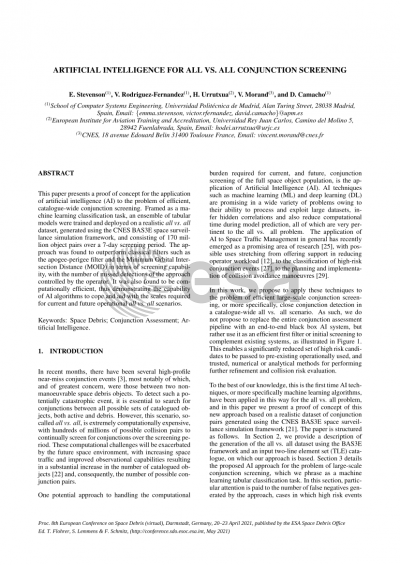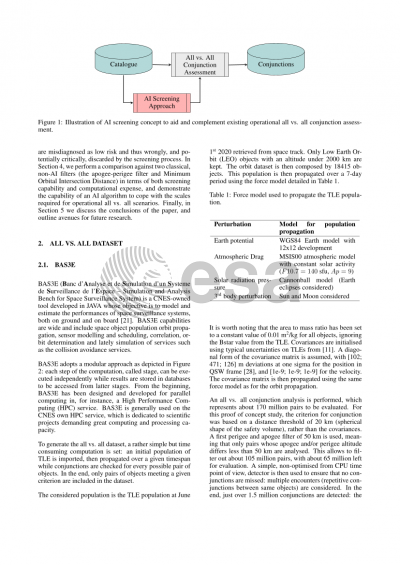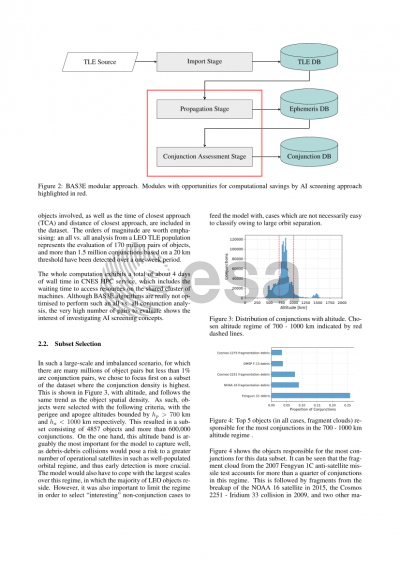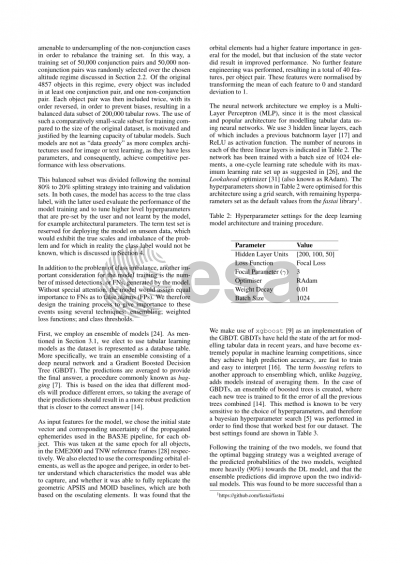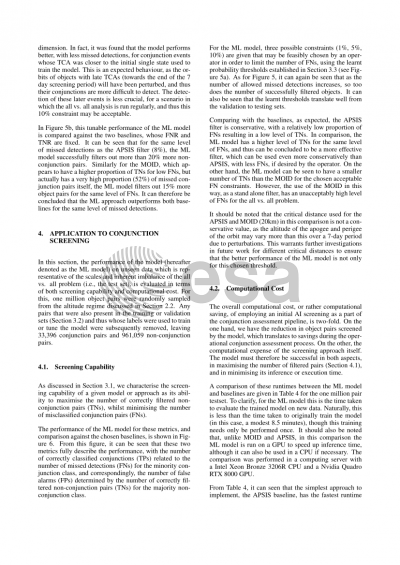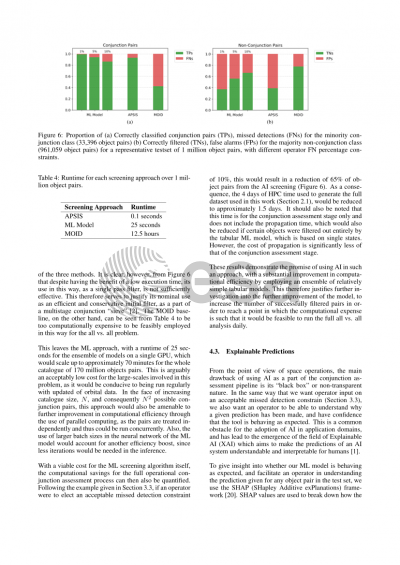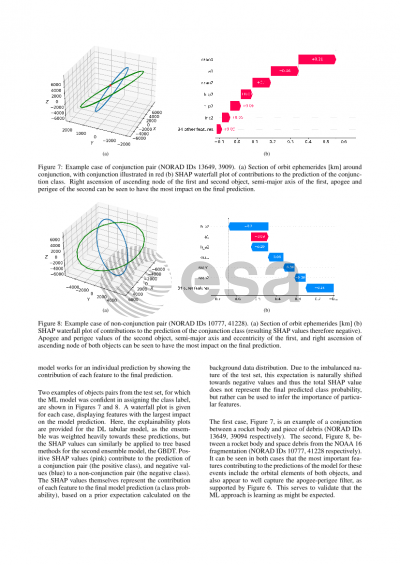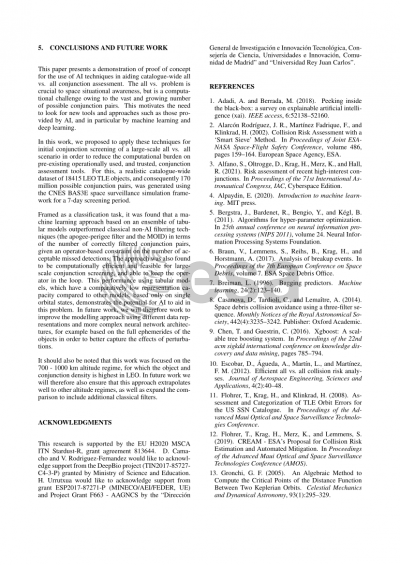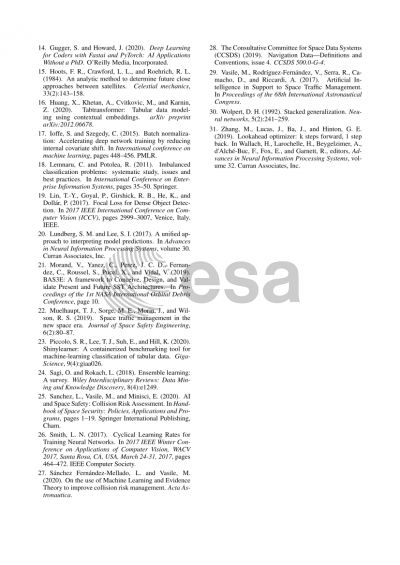Document details

Abstract
In recent months, there have been several high-profile near-miss conjunction events [1], most notably of which, and of greatest concern, were those between two non-manoeuvrable space debris objects. To detect such a potentially catastrophic event, it is essential to search for conjunctions between all possible sets of catalogued objects, both active and debris. However, this scenario, so-called all versus all, is extremely computationally expensive, with hundreds of millions of possible collision pairs to continually screen for conjunctions over the screening period. These computational challenges will be exacerbated by the future space environment, with increasing space traffic and improved observational capabilities resulting in a substantial increase in the number of catalogued objects and, consequently, the number of possible conjunction pairs.
One potential approach to handling the computational burden required for current, and future, conjunction screening of the full space object population, is the application of Artificial Intelligence (AI). AI techniques such as deep learning are promising in a wide variety of problems owing to their ability to process and exploit large datasets, infer hidden correlations and, perhaps most pertinently to this problem, reduce computational time during model prediction.
In this work, we propose to apply these techniques to the problem of efficient large-scale conjunction screening, or more specifically, close conjunction detection in a catalogue-wide all versus all scenario. Using AI in this way, as a first filter or initial screening, will enable a significantly reduced set of high risk candidates to be passed to pre-existing operationally used, and trusted, numerical or analytical methods for performing further refinement and collision risk evaluation.
A proof of concept of this new approach based on a realistic dataset of conjunction pairs generated using the CNES BAS3E space surveillance simulation framework [2], and an input TLE catalogue, will be presented. This will include a comparison, in terms of computational efficiency, with non-AI screening techniques and demonstrate the capability of an AI algorithm to cope with the scales required for operational all versus all scenarios. In addition, particular attention will be paid to the number of false negatives generated by the approach, cases in which high risk events are misdiagnosed as low risk and thus wrongly, and potentially critically, discarded by the screening process.
[1] S. Alfano et al., Risk Assessment of Recent High-Interest Conjunctions, 71st International Astronautical Congress, October 2020.
[2] V. Morand et al., BAS3E: A Framework to Conceive, Design, and Validate Present and Future SST Architectures, 1st NASA International Orbital Debris Conference, December 2019.
Preview
